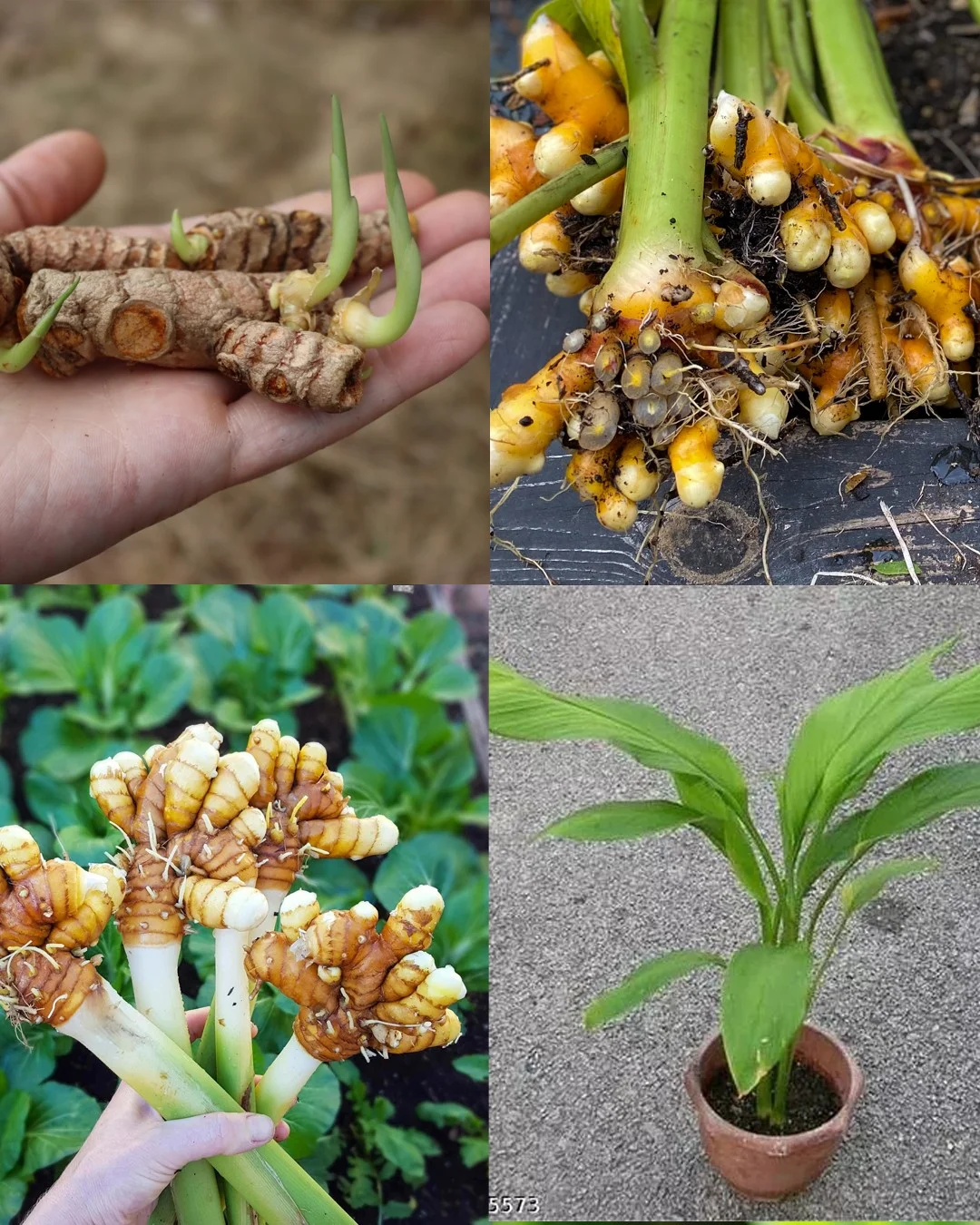Introduction:
Turmeric, with its vibrant golden hue and myriad health benefits, is a prized addition to any kitchen. While traditionally grown in tropical regions, cultivating turmeric in containers opens up possibilities for enthusiasts in any climate zone. Let’s delve into the enriching journey of nurturing this aromatic spice from the comfort of your home.
1. Selecting Prime Turmeric Rhizomes:
Begin with the foundation of your turmeric venture – the rhizomes. Seek out robust specimens with firm textures, preferably with visible buds or “eyes” indicating growth points. These treasures can be sourced from reputable garden centers or organic markets.
2. Choosing the Perfect Container:
Turmeric plants are known for their expansive foliage, reaching heights of up to three feet. To accommodate this lush growth, opt for a capacious container with dimensions of at least 12 inches in depth and 12-18 inches in diameter. Crucially, ensure the container boasts ample drainage holes to avert water stagnation.
3. Preparing the Soil with Care:
Crafting an optimal environment for your turmeric begins with the soil. Blend a well-draining potting mix with organic compost or aged manure, infusing the substrate with vital nutrients. This fertile foundation sets the stage for robust plant growth and bountiful harvests.
4. Planting the Rhizomes with Precision:
Nestle the turmeric rhizomes approximately two inches deep within the prepared soil, with their budding points facing upwards. For larger containers, spacing multiple rhizomes at least six inches apart ensures ample room for expansion and unhindered growth.
5. Nurturing Ideal Growing Conditions:
Turmeric thrives in warm, humid climates, mirroring its tropical origins. Position your container in a sunlit spot receiving 4-6 hours of indirect sunlight daily. Strike a delicate balance with soil moisture, avoiding both parched earth and waterlogged conditions. Aim for temperatures ranging between 68-86* °F (20-30°C) to facilitate optimal growth.
6. Tender Care for Thriving Turmeric:
Sustain the vitality of your turmeric through attentive maintenance:
– Water judiciously, maintaining consistent soil moisture, especially during active growth phases.
– Nourish the plants every 4-6 weeks with an organic fertilizer to fortify their nutrient reserves.
– Prune diligently to eliminate withered foliage and promote vigorous new growth.
7. Harvesting the Fruits of Labor:
Exercise patience as your turmeric matures over 7-10 months. Once the leaves and stems begin to desiccate and turn brown, it’s time to reap the rewards. Gently excavate the rhizomes from the soil, cleanse them thoroughly, and allow them to air dry.
8. Curing and Preservation Techniques:
Enhance the potency and longevity of your turmeric harvest through meticulous curing:
– Boil the freshly harvested rhizomes for 45 minutes to facilitate curing.
– Dry the blanched rhizomes in a well-ventilated, shaded area for at least a week.
– Store the dried rhizomes in a cool, dark locale or grind them into sumptuous powder for culinary applications.
9. Overwintering for Sustained Growth:
For enthusiasts in colder climes, ensure the survival of your turmeric by relocating containers indoors when temperatures plummet below 50* °F (10°C). Provide adequate light and moisture to foster continued vitality during the winter dormancy period.
Conclusion:
Embark on a journey of homegrown abundance with container cultivation of turmeric, transcending geographical constraints to savor this golden spice’s essence. Armed with discerning selection, meticulous care, and the joy of nurturing, enthusiasts can cultivate turmeric with aplomb, enriching their culinary repertoire and embracing a lifestyle of wholesome self-sufficiency. Whether novice or seasoned gardener, let this guide illuminate your path to turmeric cultivation and share the bounty with fellow aficionados.

